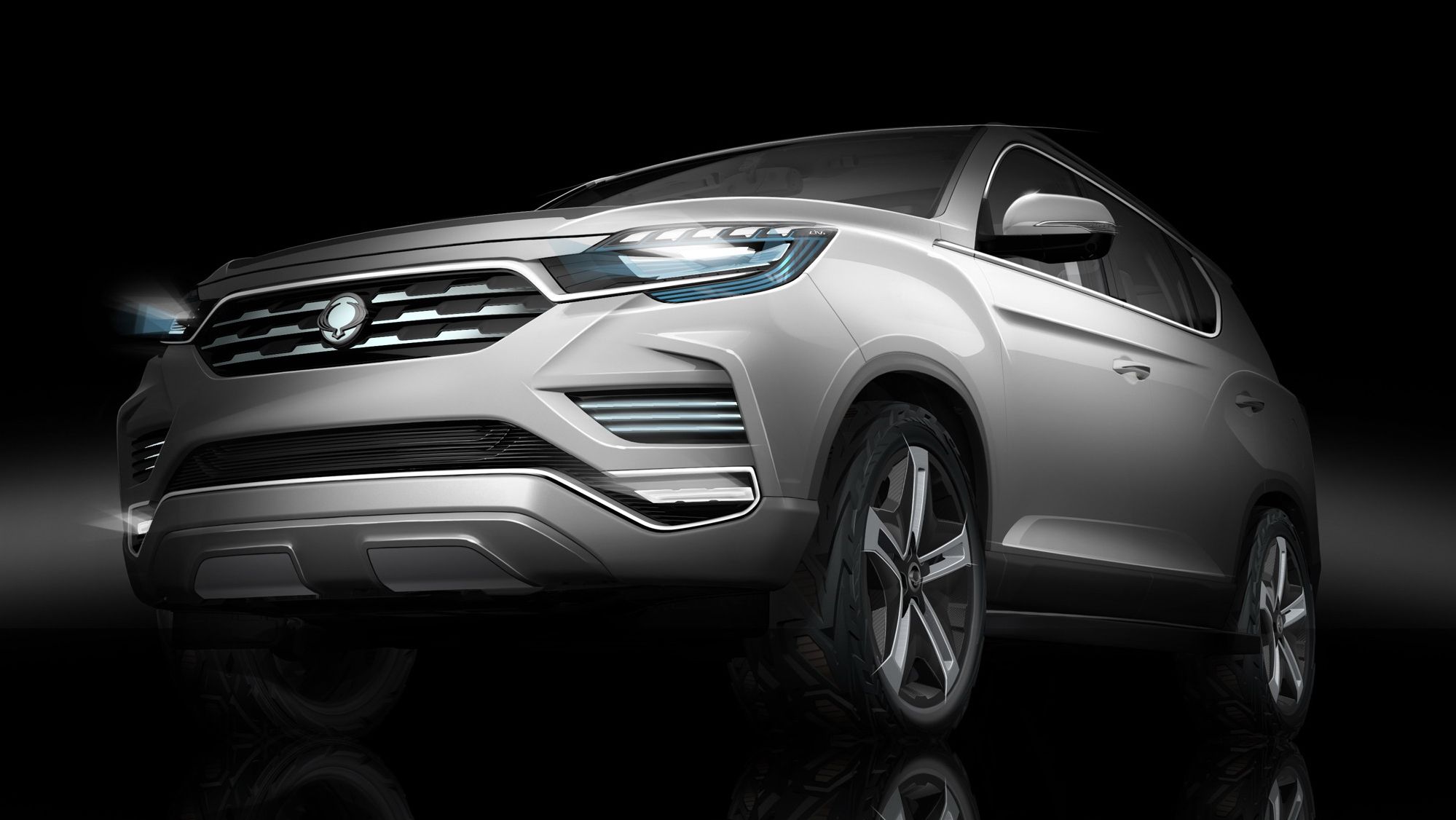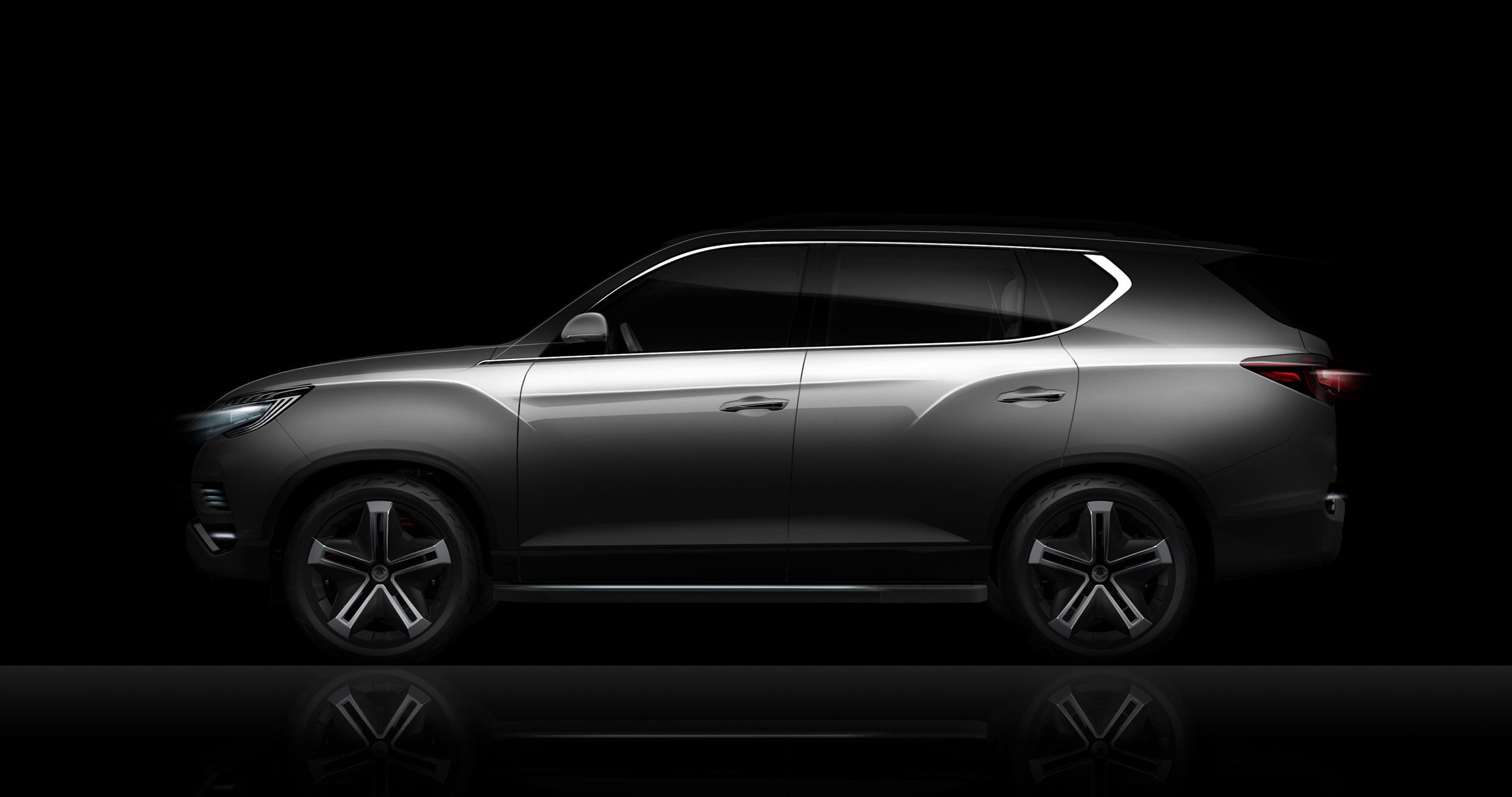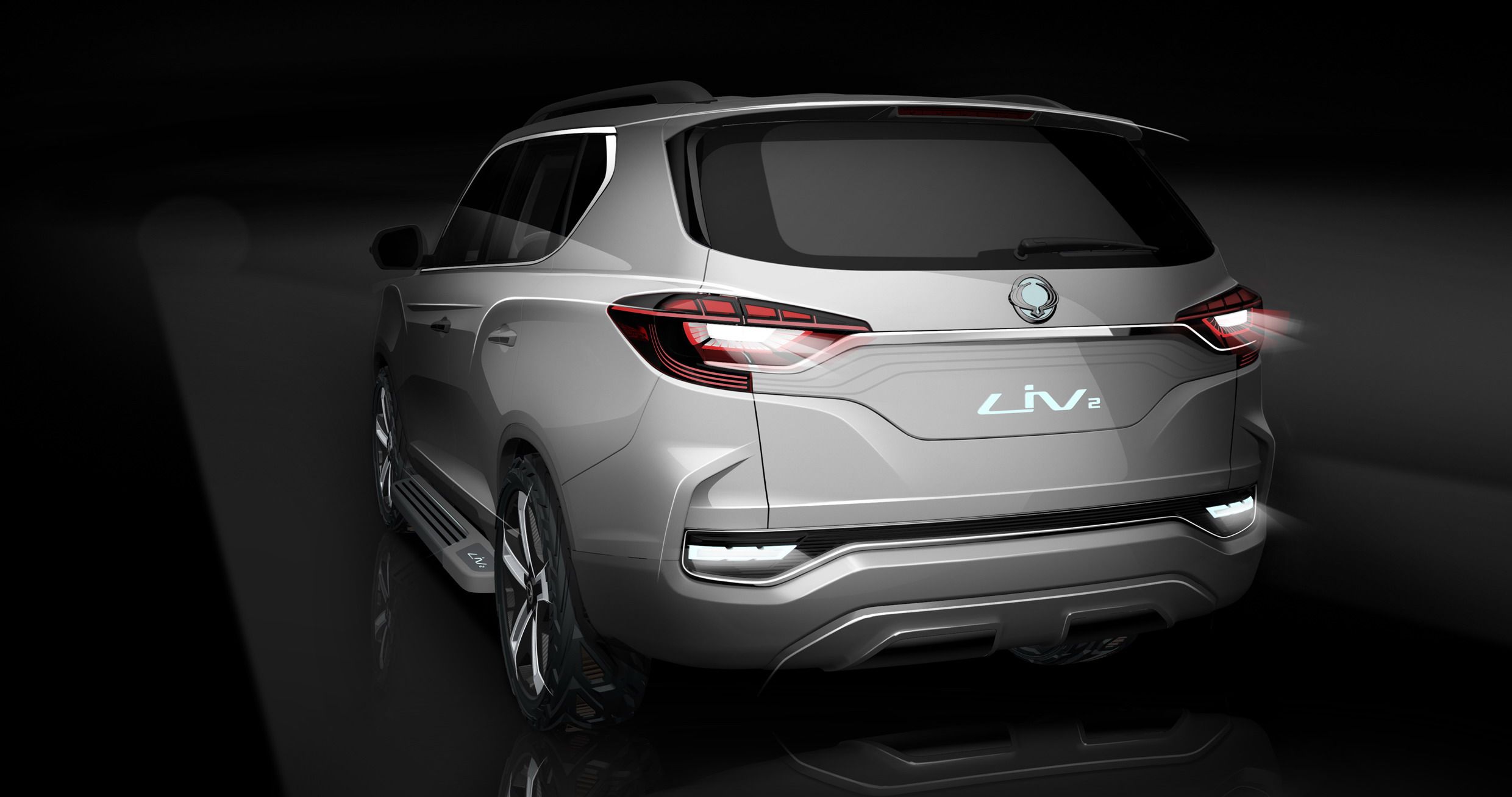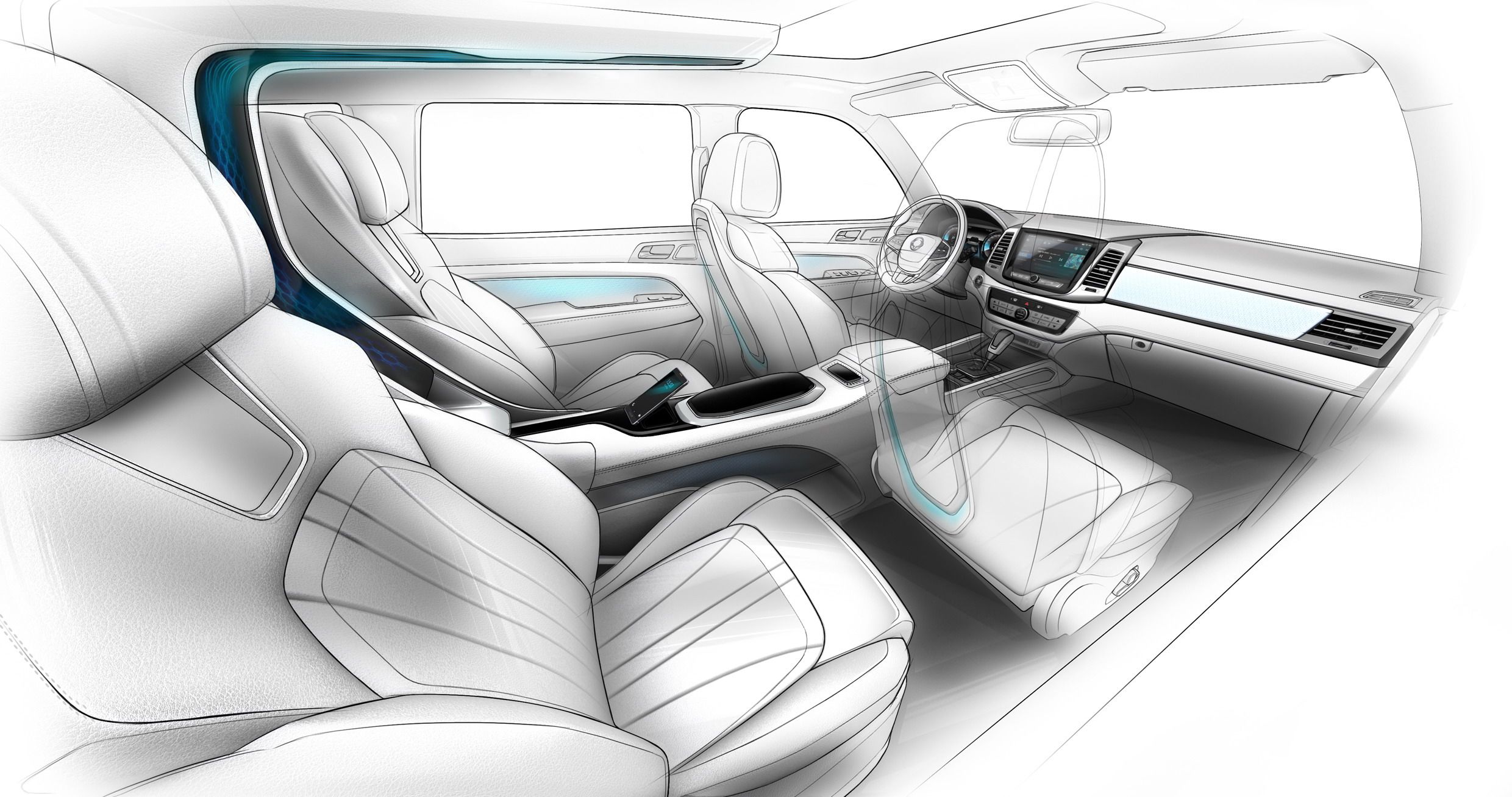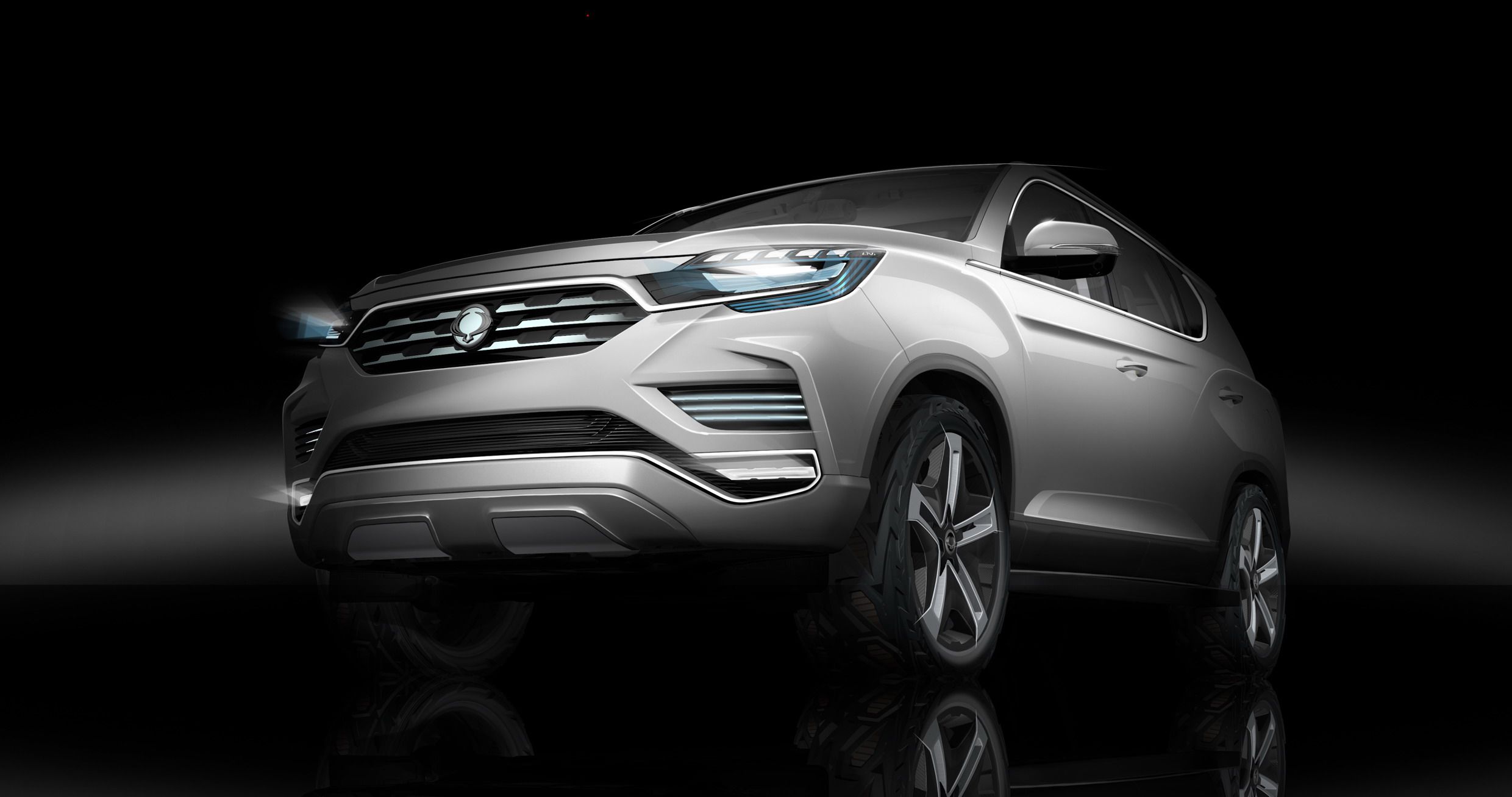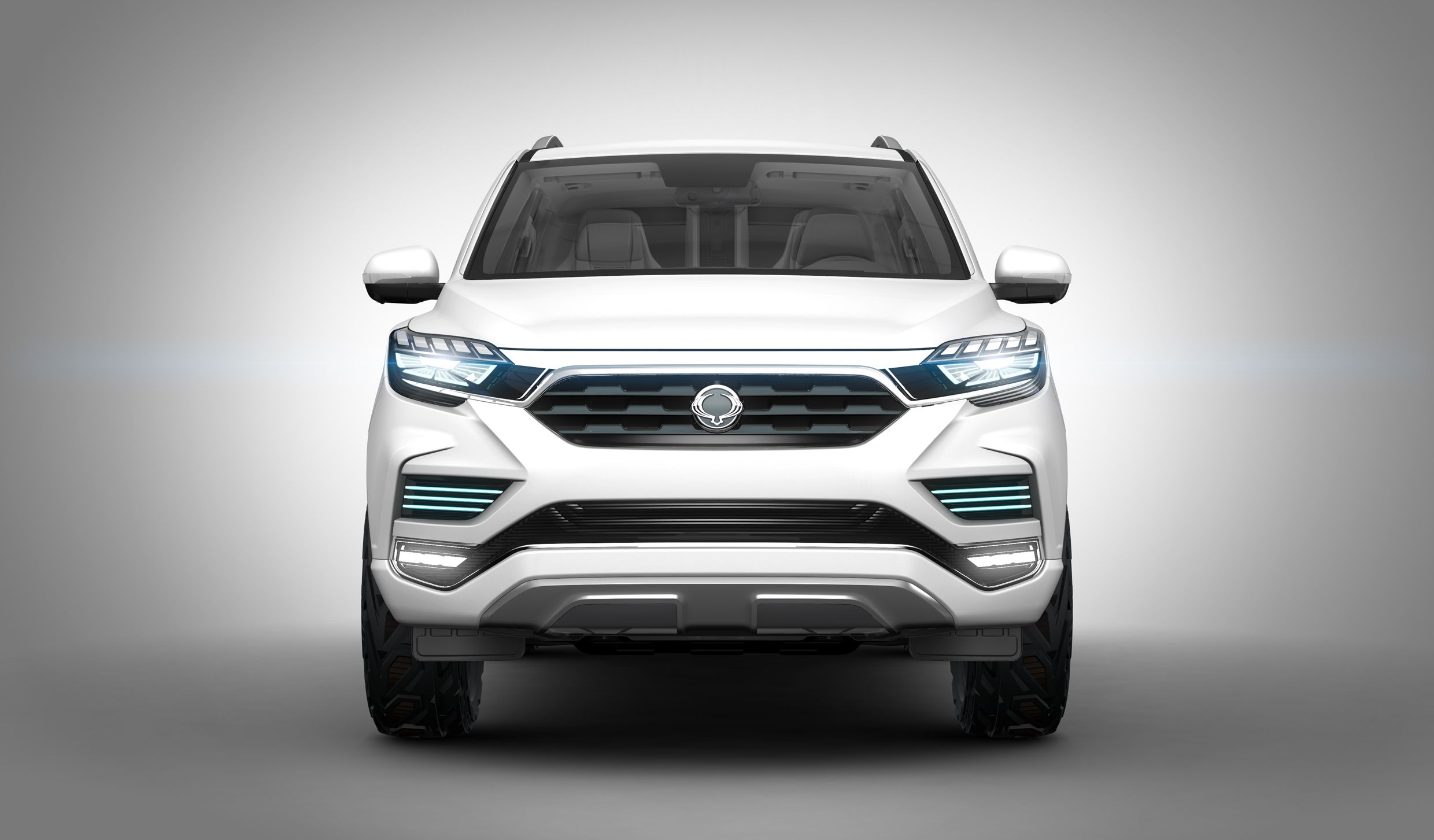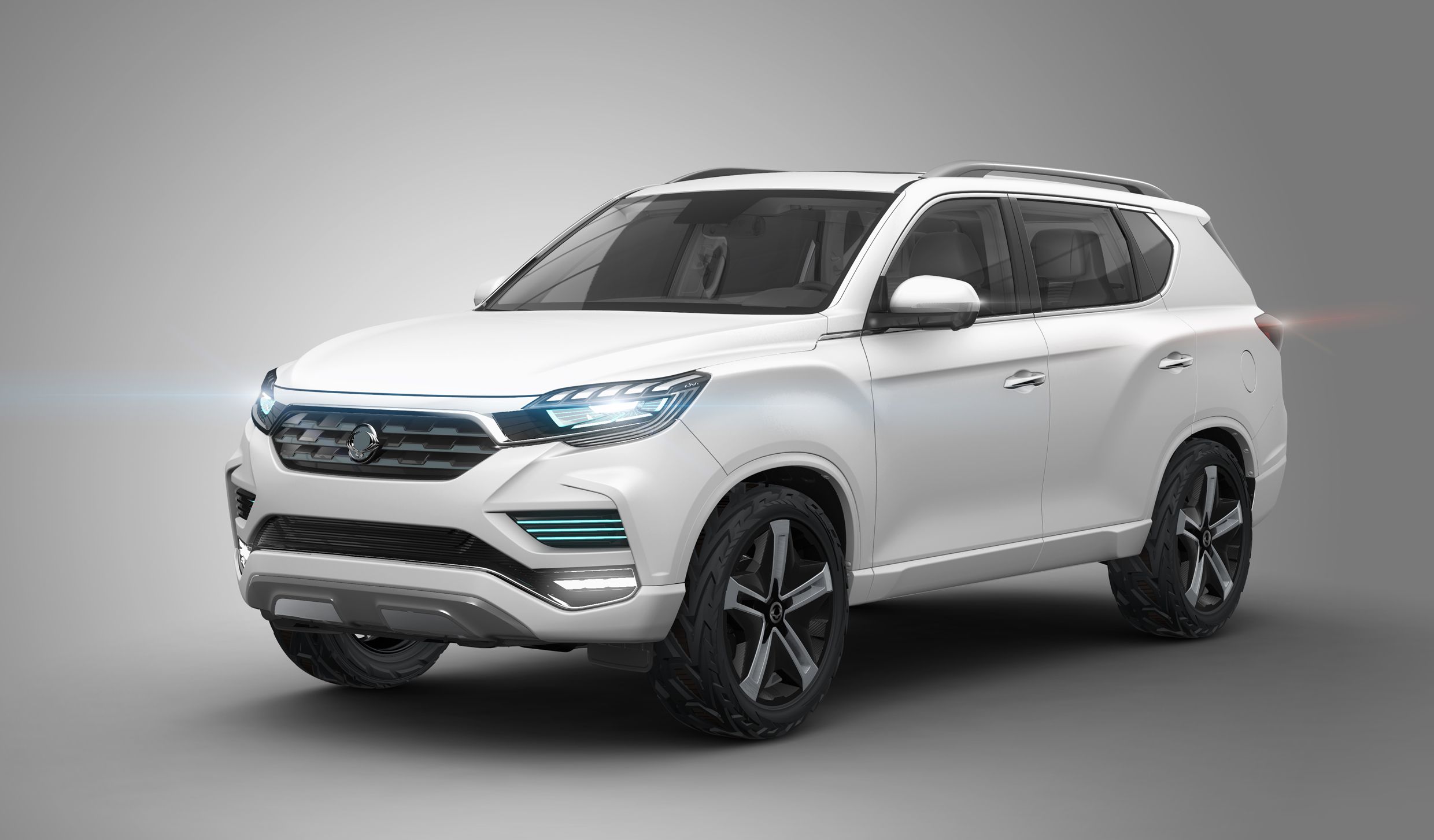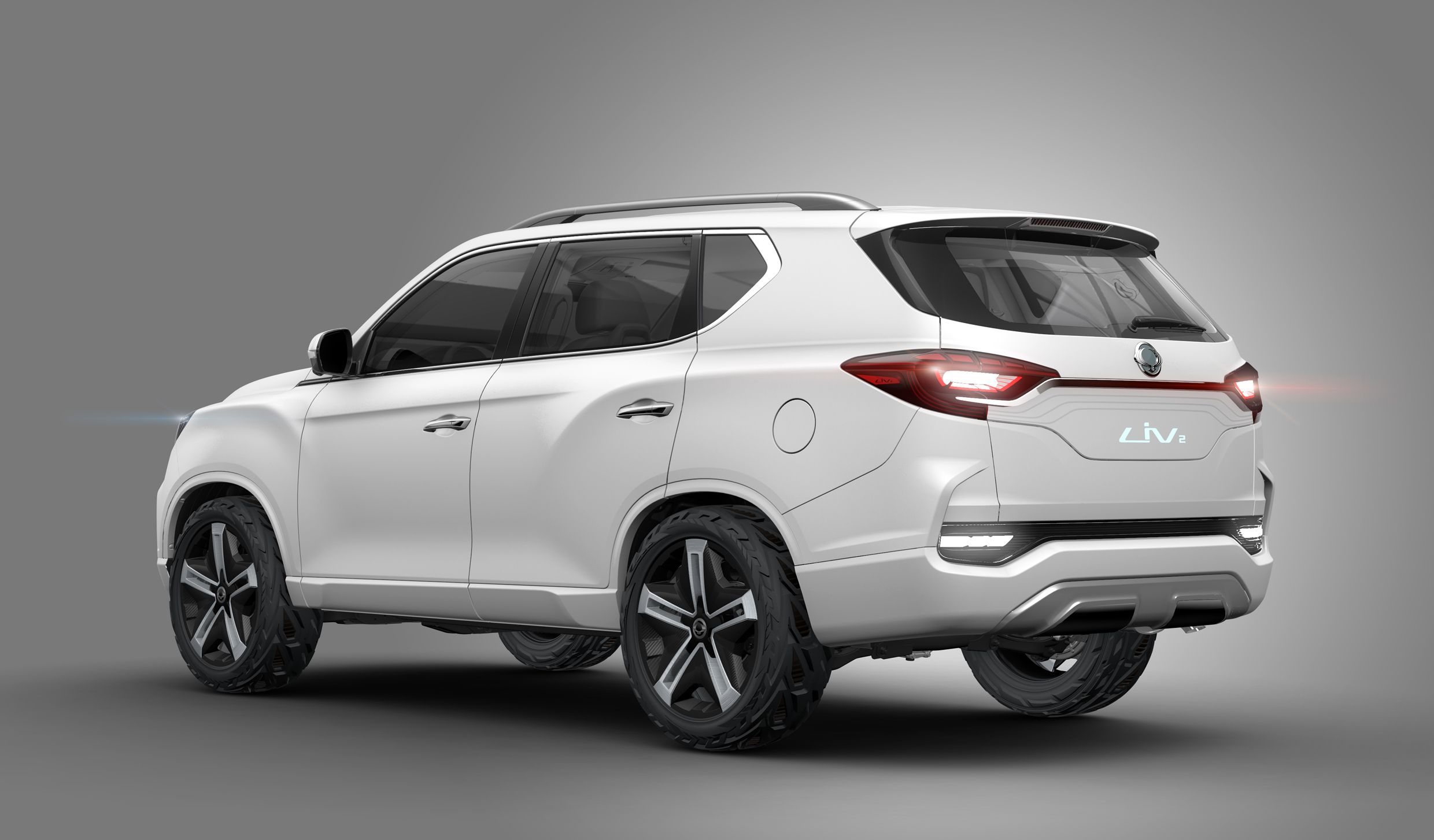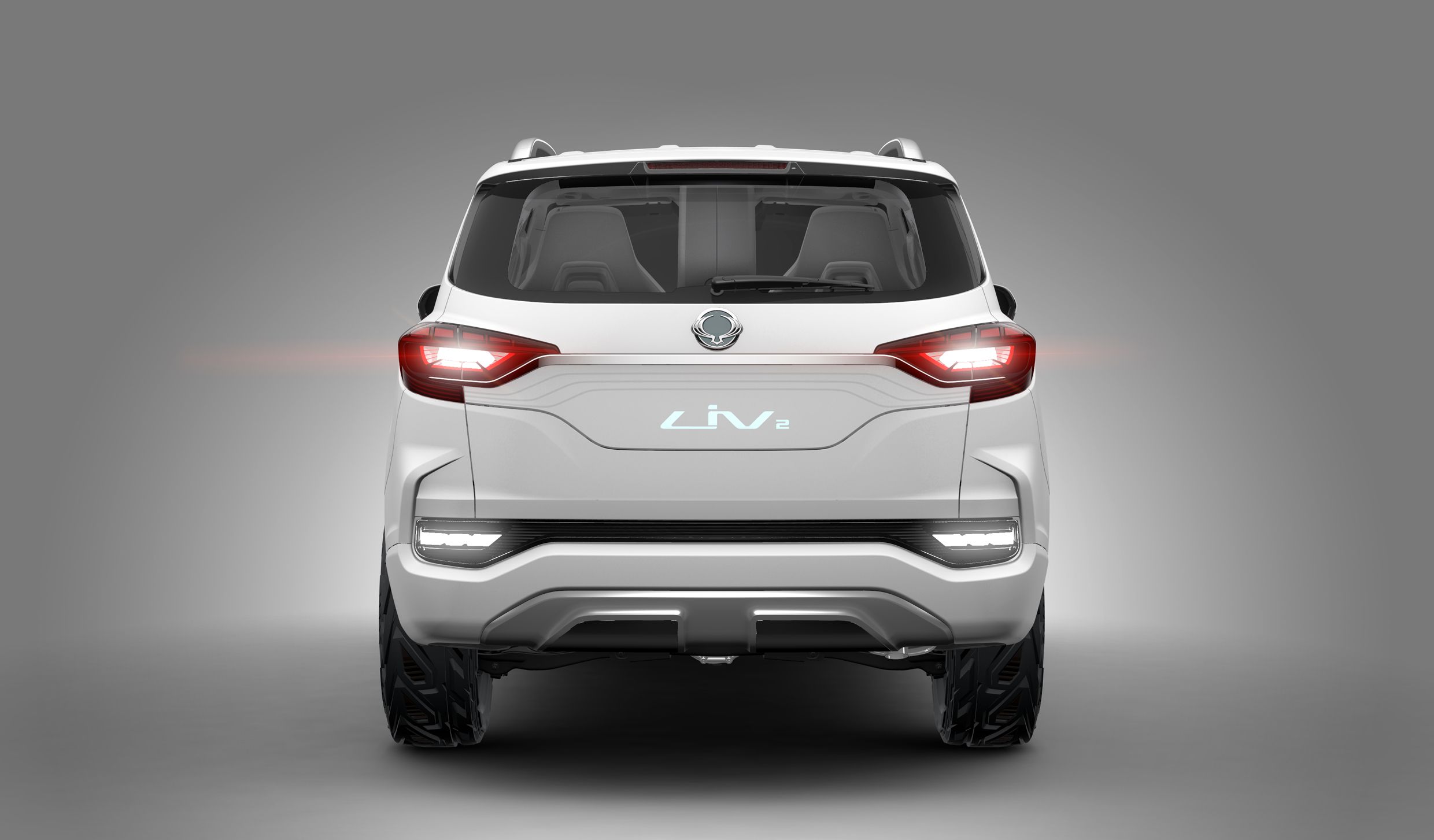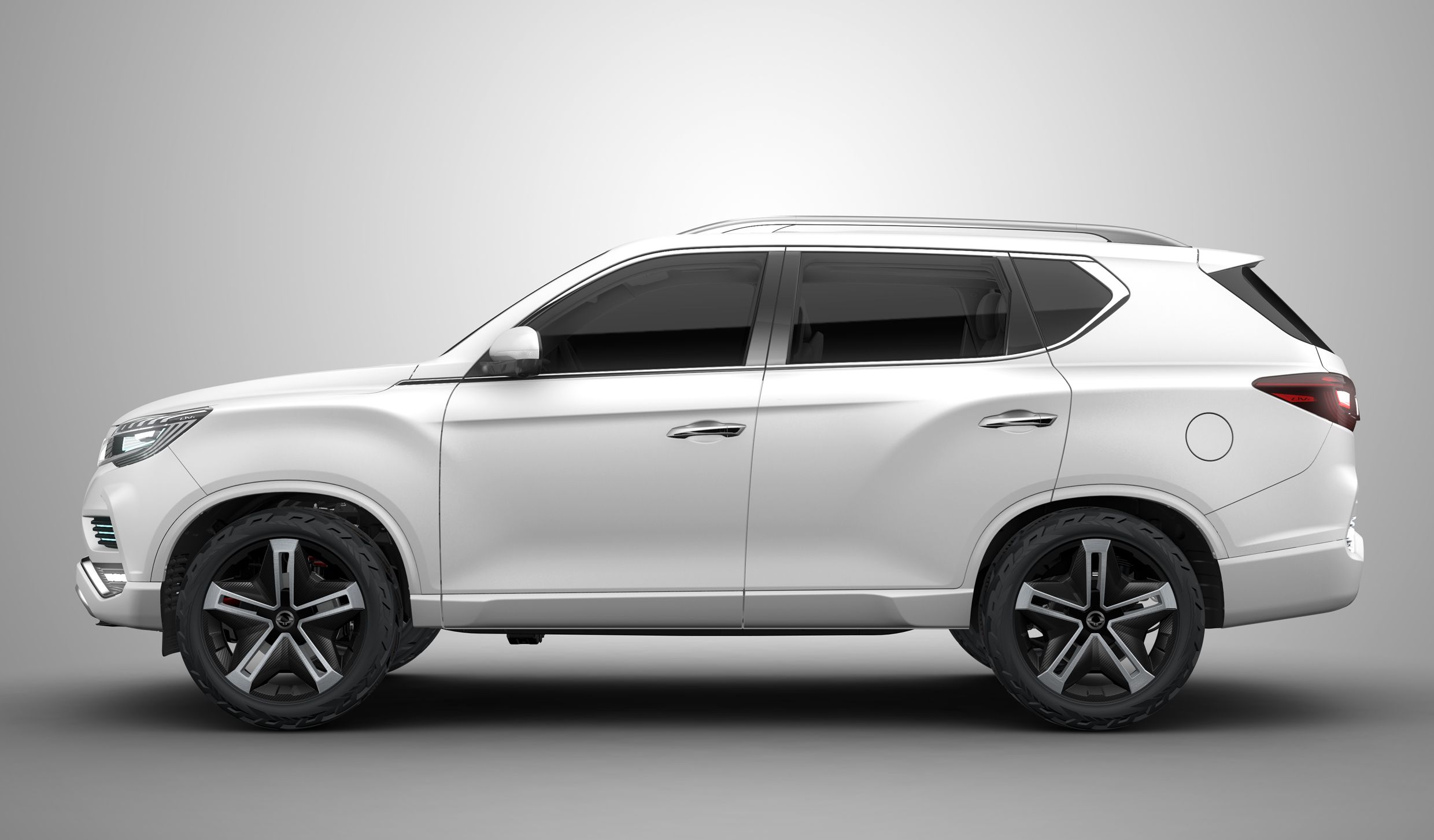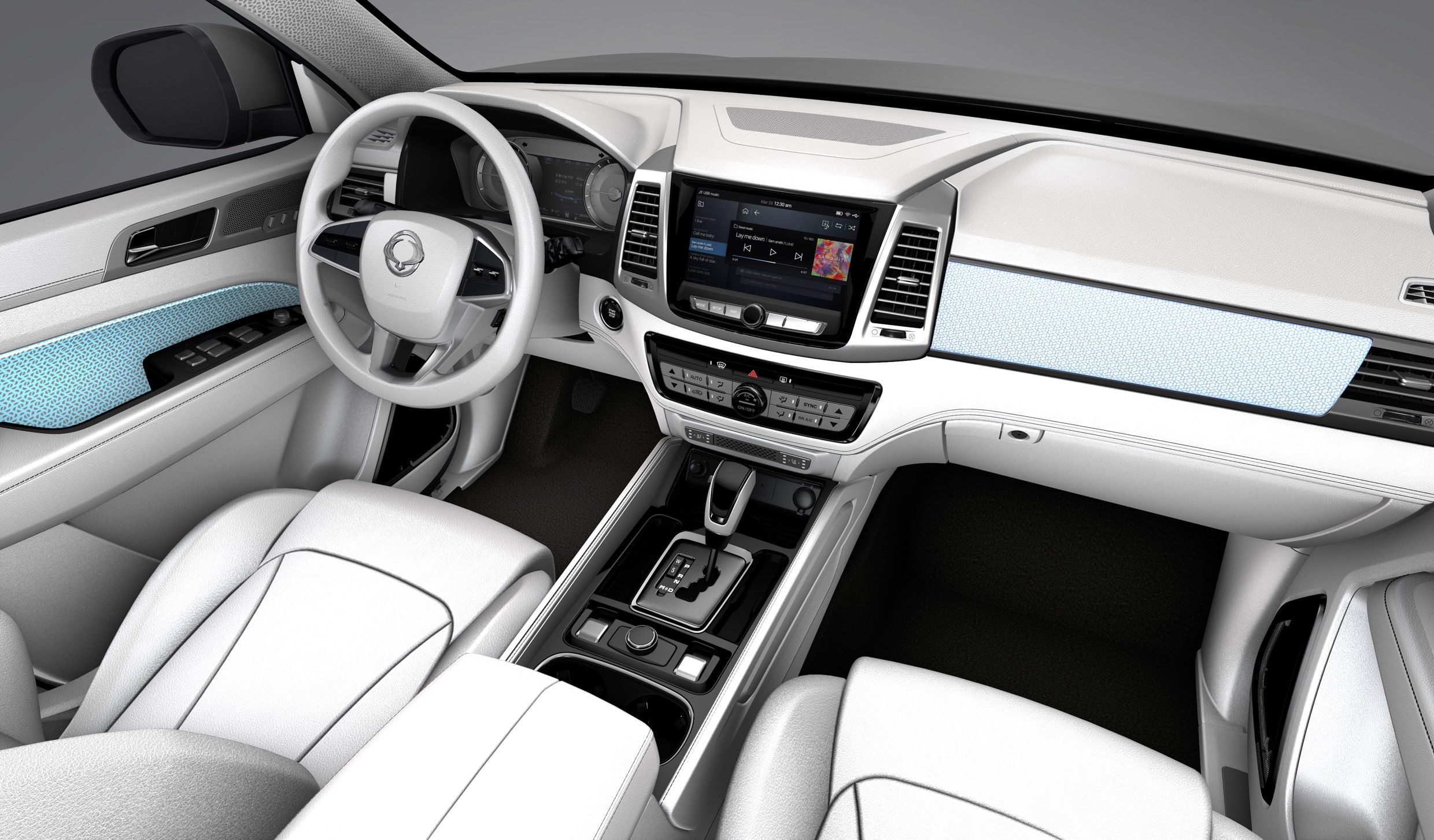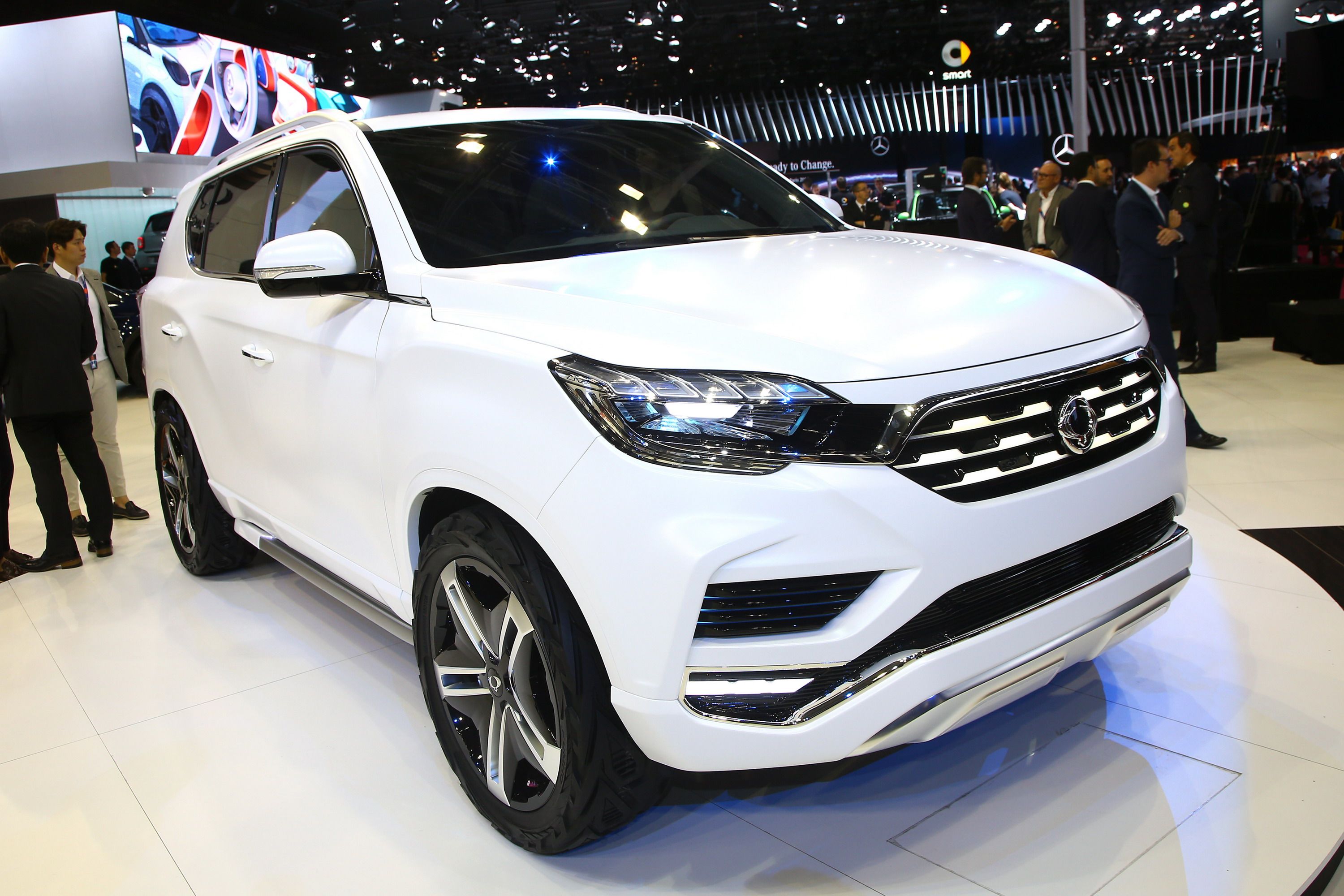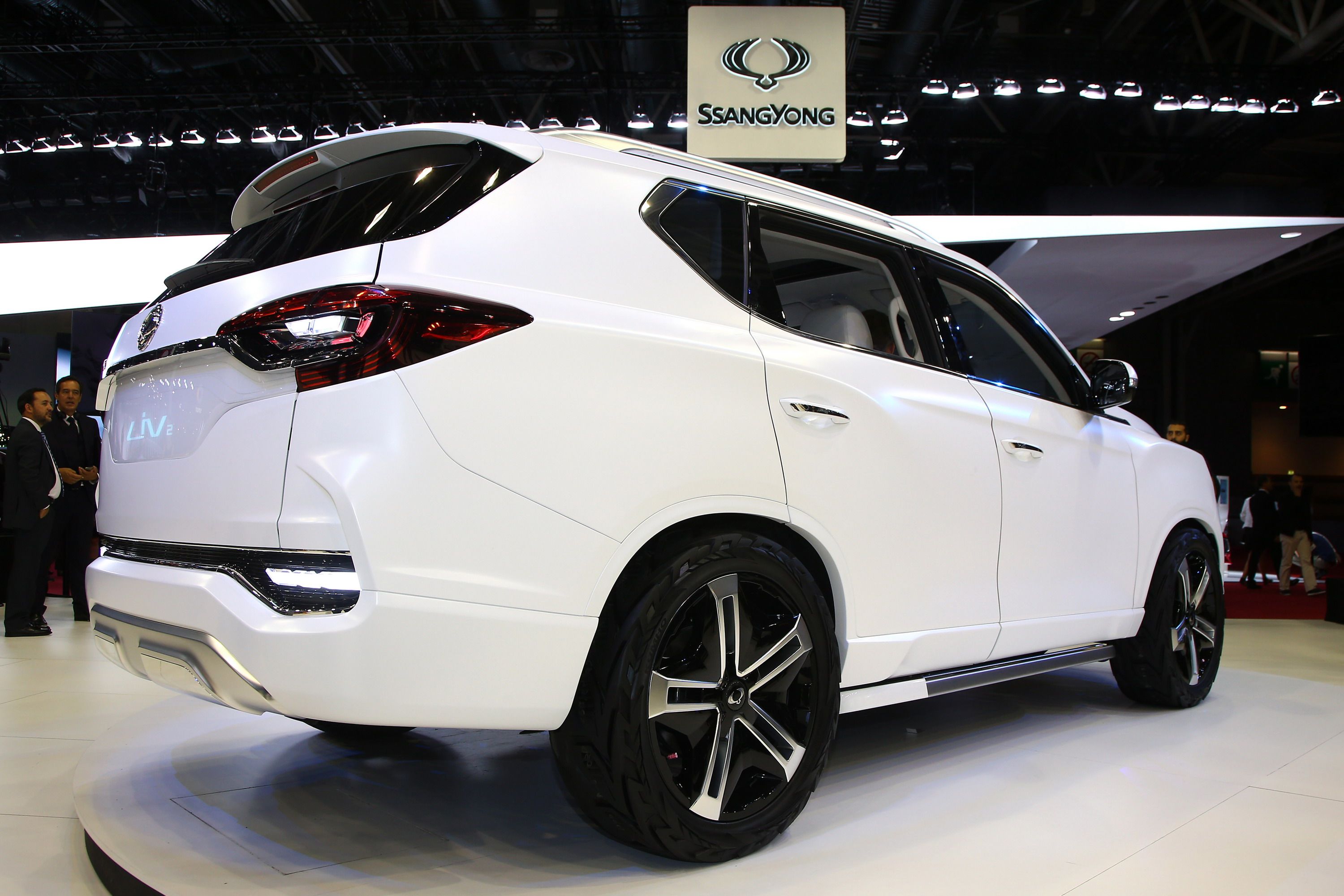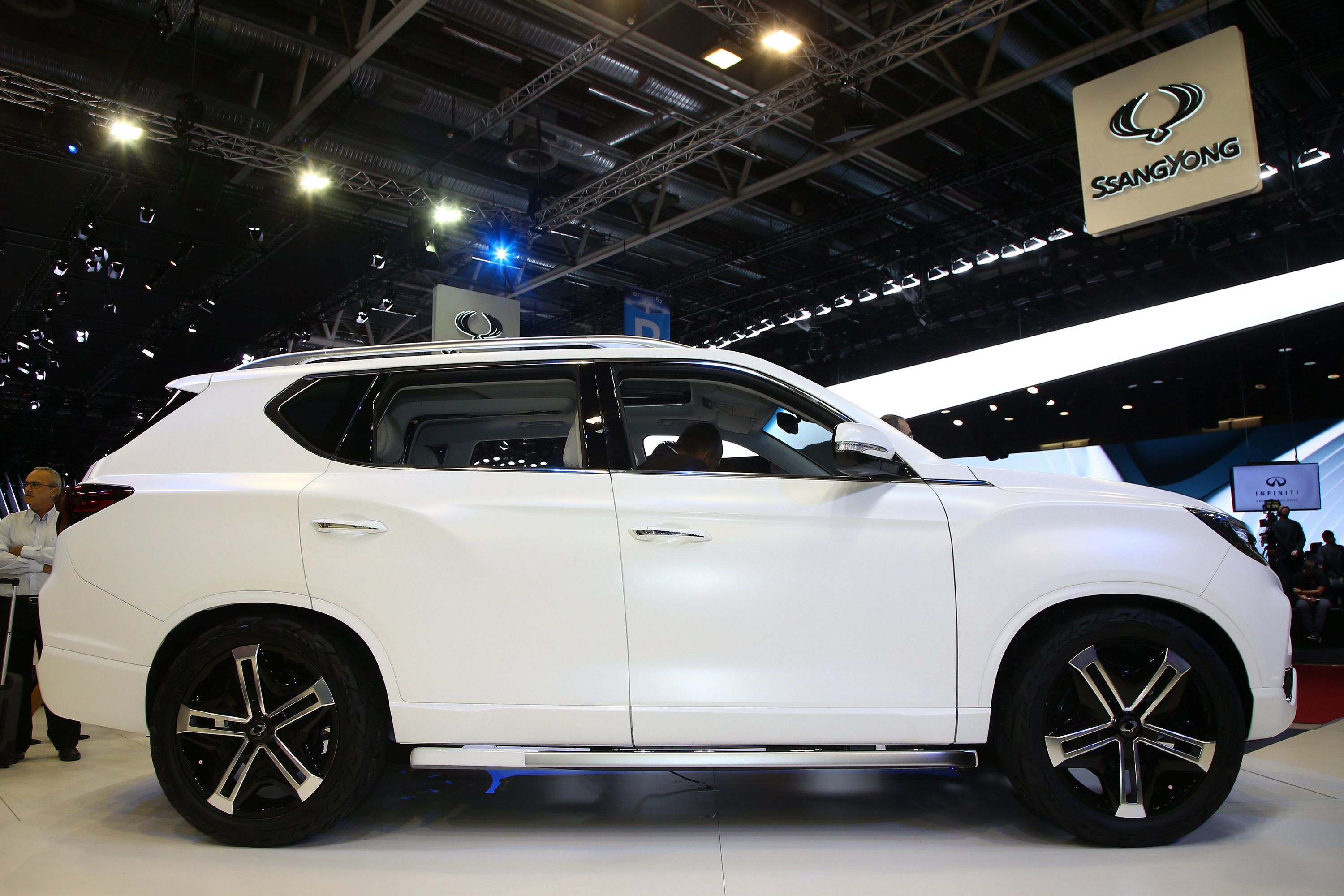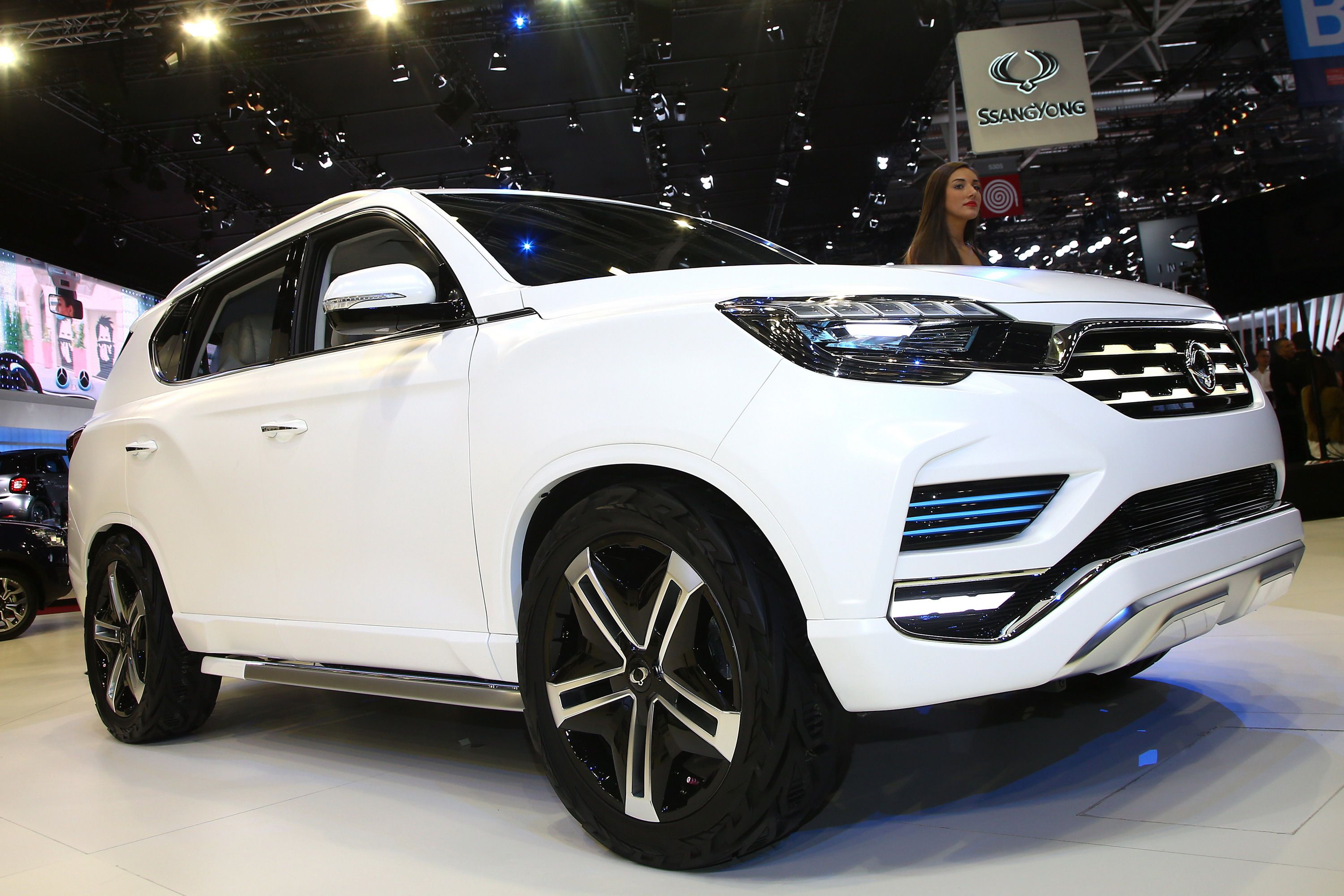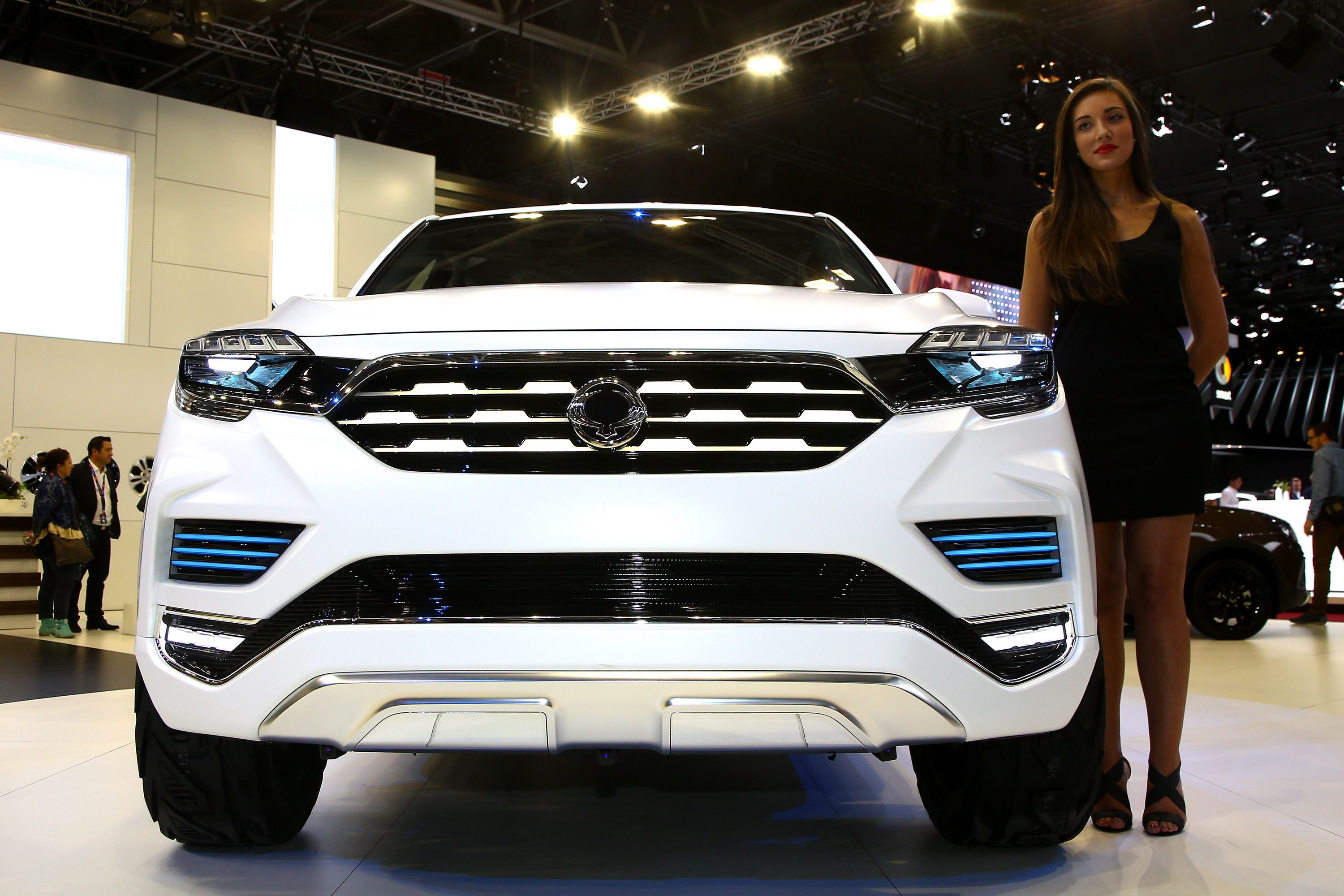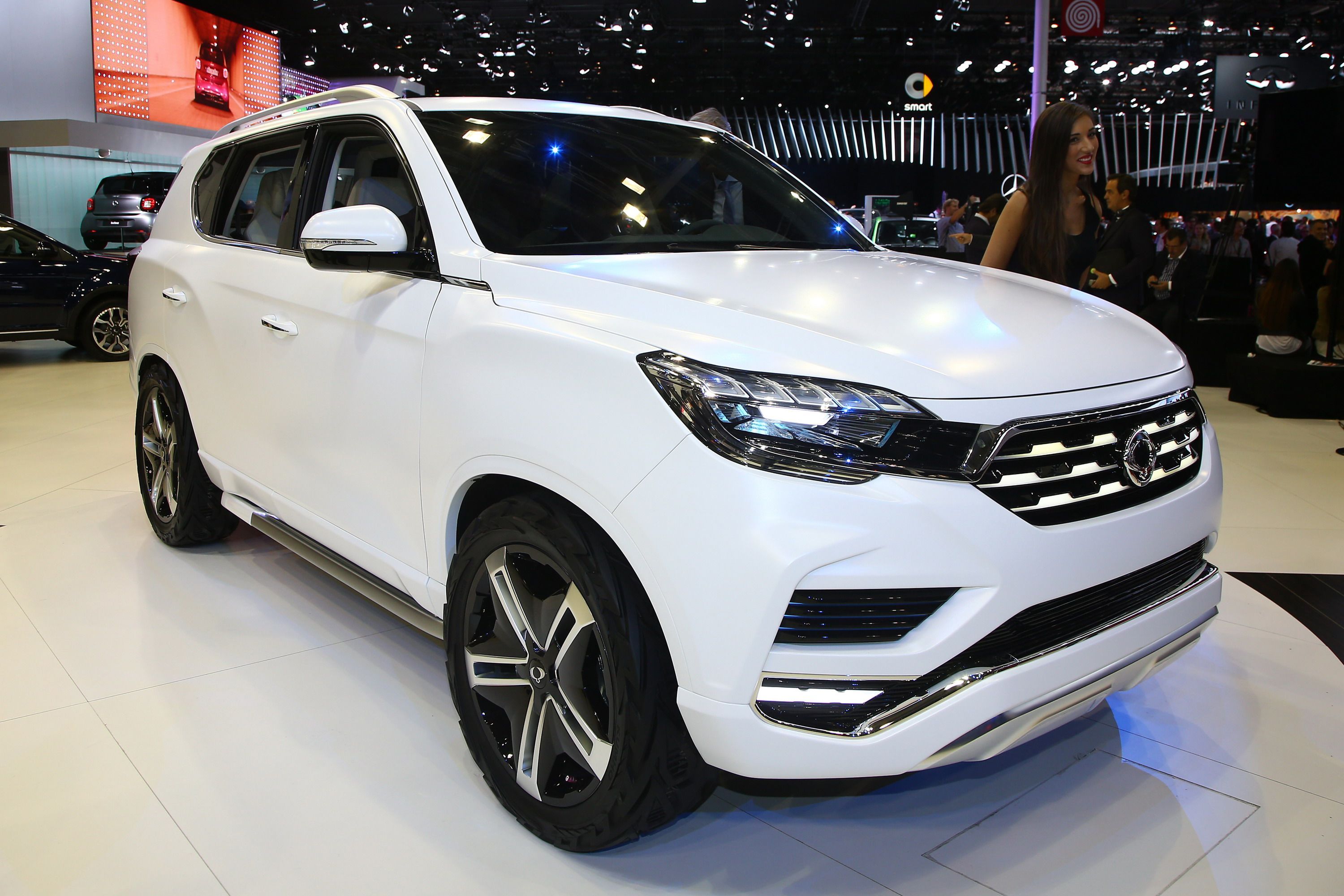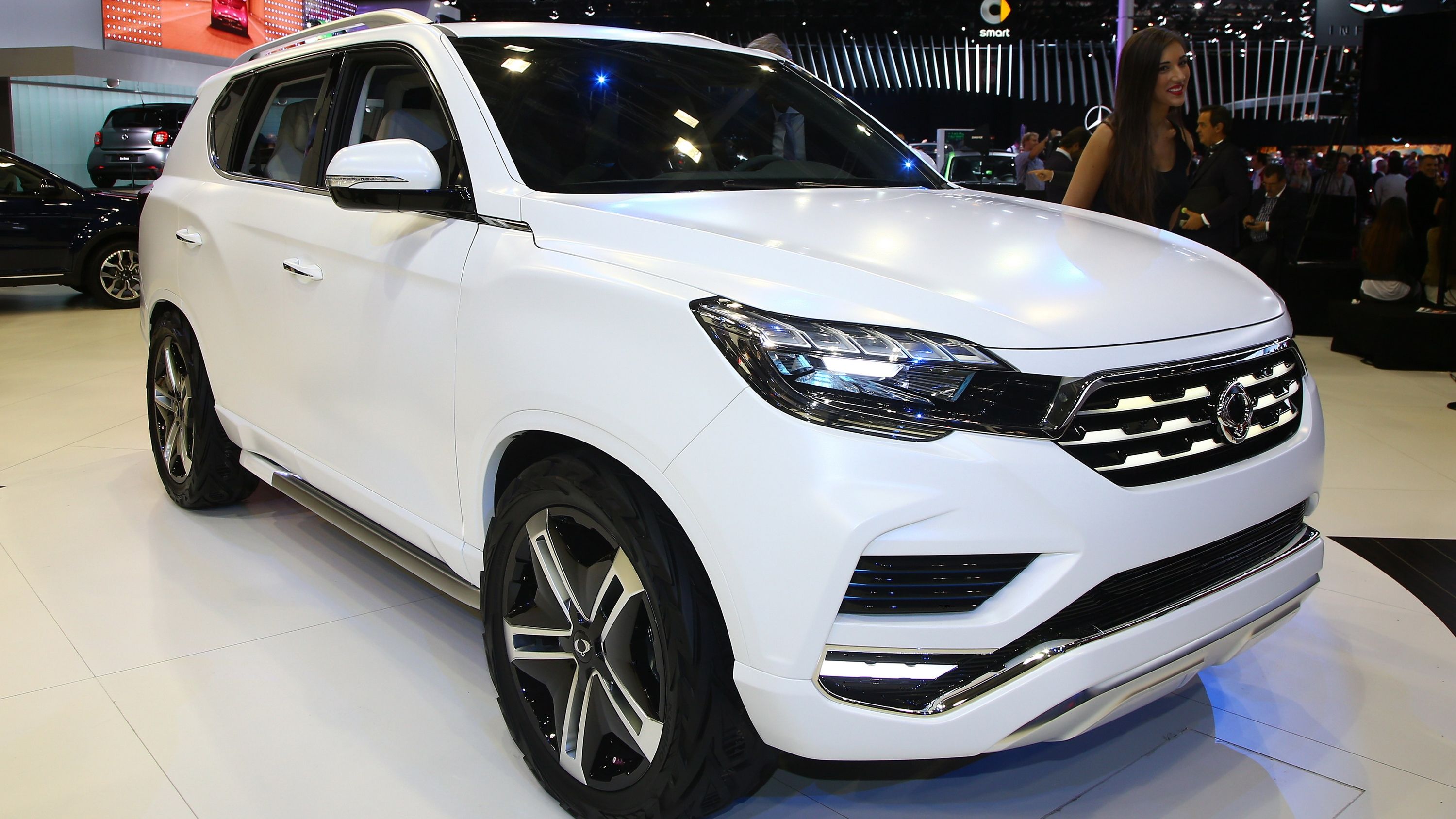South Korean automaker SsangYong has officially revealed its latest concept vehicle, the LIV-2. Making its public debut at the 2016 Paris Motor Show, the LIV-2 is framed as a “large premium SUV” that’s expected to replace the current Rexton mid-size SUV when it reaches production form sometime next year. The concept is a preview of the upcoming model’s new styling, both inside and out, plus the technology added for safety and entertainment. Customers will get to choose between diesel or gasoline power under the hood.
The LIV in LIV-2 stands for “Limitless Interface Vehicle,” which is a bit vague, but that’s to be expected. This is actually the second iteration of the LIV theme, with the LIV-1 concept breaking cover a few years back at the 2013 Seoul Motor Show. The LIV-2 is said to be the final variant of the Y400 development model (Y400 is the model’s internal product code at SSangyong).
Basically, this is the idealized iteration of Ssangyong’s flagship SUV, a critical model for a company aiming at bringing sturdy (but comfortable) off-roaders to markets like South America, Russia, and China.
The real question is this – what will this thing look like in production form? Read on for the details.
Continue reading to learn more about the SsangYong LIV-2.
2016 SsangYong LIV-2
- Make: Array
- Model: 2016 SsangYong LIV-2
- [do not use] Vehicle Model: Array
Exterior
Flowery, grandiose language is pretty much par for the course when it comes to describing a fresh concept’s aesthetic, and the LIV-2 is no different. SsangYong starts off with its newest design language, dubbed “Dignified Motion,” which is slated for other future models. The LIV-2 also takes inspiration from nature with the philosophy “Nature-born 3Motion,” plus the traditional SUV personality traits of masculinity and hardiness (“Robust Aesthetics”).
As for the sizing, the LIV-2 looks to preview the automaker’s upcoming SUV efforts in the mid-size D-segment and full-size E-segment.
The body itself is draped in white, with both matte and gloss finishes on the panels. Although this model is sharper and more technical than its predecessor, the lineage between the LIV-1 and LIV-2 is obvious.
Let’s start in front, where we find a grille and headlight combo that blends together in an attempt to mimic the wings of a bird. The fascia is similar to what was used for the Tivoli, and will be used across the automaker’s future lineup. The corner lights in the lower bumper come in triplets, while silver skid plates ward away threats to vulnerable mechanicals.
In profile, it looks like most of the preceding concept’s lines were retained, including the bulging character lines that accentuate the rear fenders. This look was also used with the Tivoli, and will be implemented in all future SsangYong models. To my eye, the crease really pulls the clean design together, while also adding a nice bit of beefiness.
The roofline falls straight towards the hatch in back, while large five-spoke wheels come wrapped in meaty tires. The windows get polished surrounds, and step assists are hidden under the body.
The tail was updated from the LIV-1, bearing a cut that looks square compared to the preceding concept’s more rounded look. The taillights get new backup lights in the center, complemented by further backup lights in the corners of the bumper. Below, we find a skid plate with two cutouts for the exhaust. Up top is a roof spoiler.
The real question is how much influence the concept will have over the upcoming Rexton-replacement. At the moment, the production SUV is rather plain, at least compared to something like the LIV-2. While beefy in its proportions and stance, the current production model has none of the sharpness or boldness of this design study, and although the wheels and various extraneous lights that dot the concept will most likely hit the dustbin before the next-gen Rexton rolls off the assembly line, I’d love to see some of the concept’s fender creases and fascia lines make the cut.
Finally, it’s expected that the final production iteration of the LIV-2 will be both longer and wider than the current Rexton.
Interior
Like the exterior, the interior of the LIV-2 is draped in white. Offsetting this is a good deal of piano black trim, as well as adjustable ambient lighting that enhances the door panels and the console. Complementing the interior lighting is exterior illumination along the electric side-ups, which should help aid ingress and egress, even at night.
As far as layout is concerned, the LIV-2 looks to underscore the rear seating area, where we find two individual captain seats in place for relaxation and entertainment, or working and productivity. As such, passengers will enjoy plenty of space – SsangYong says it hoped to instill the LIV-2 with an almost limo-like ambiance, even mentioning a chauffer in the press release. A control-studded rear console (plus touch panel) enhances this passenger-centric focus, while each of the four seats comes with a recline and massage function. Leather upholstery with a Geonic pattern adds the right texture.
But modern luxury should also include new technology, and the LIV-2 follows through with a slew of screens and infotainment features. There are three displays spread across the cabin, including a 9.2-inch unit in the center console, and two 10.1-inch units in the headrests facing towards the rear.
There’s also a Wi-Fi hotspot, plus the usual smartphone support (Apple CarPlay, Android Auto, headset interface, phone recharging capabilities, etc.).
On the safety front, the LIV-2 gets nine airbags (front, front and rear side, curtain and driver’s knee), plus a suite of the latest passive and active features thanks to the inclusion of radar, lasers, and a camera. That includes automated braking and obstacle detection, which will warn the driver when a car or pedestrian is in the car’s path and automatically apply brakes if needed. There’s also traffic safety assist and high beam assistance for night driving, lane departure warning, blind spot detection, lane change assist, and a rear cross traffic alert.
As for predictions for the production model – I’m guessing SsangYong will end up ditching the four-person layout in favor of a more traditional five-seater. And like the current Rexton, seven passengers should also be on the table.
That means the rear control console will probably get the axe. However, the three-spoke steering wheel, digital gauge cluster, optional high-end materials, and displays up front should remain in one form or another. The same goes for the Wi-Fi, Apple CarPlay and Android Auto. The airbags should come standard, while the advanced features like automatic braking will probably be offered for extra outlay.
Drivetrain
Providing motivation is a 2.2-liter oil burner. Helping the diesel powerplant achieve a nice mix between power and efficiency is a fifth-gen Electronic-Variable Geometry Turbocharger, and 2,000 bar direct injection.
Other features include a variable oil pump and low-tension piston rings, both of which help to lower overall engine friction. Scrubbing the stuff coming out the tailpipe is a Low-Pressure-Exhaust Gas Recirculation system, which uses an exhaust gas recirculation valve, Nickel-plated compressor wheel, and “I-flow & wavy fin type” exhaust gas recirculation cooler to keep it all compliant.
As for output, torque peaks at 420 Nm (310 pound-feet) between 1,500 and 2,500 rpm. SsangYong declined to mention horsepower figures.
Interestingly, 310 pound-feet is an increase compared to the automaker’s current 2.2-liter unit, which was just updated for 2016 to produce 176 horsepower and 295 pound-feet of torque. Perhaps another update for 2017 is in the works.
If gasoline is more your thing, the upcoming production model should also offer a 2.0-liter turbo alternative, which apparently uses an integrated exhaust manifold head and an electric waste gate actuator. No output figures on this were released with the LIV-2 Concept, but considering the current Rexton employs a 3.2-liter with 217 horsepower and 230 pound-feet of torque, we’d expect roughly equivalent peak figures for the downsized option, plus higher mpg and lower emissions.
Handling the cog swaps will be an automatic seven-speed sourced from Mercedes, but an eight-speed transmission is expected soon after the production model’s big reveal. What’s more, FWD is expected as standard, with SsangYong’s in-house developed 4WD offered as an option.
Underneath it all is body-on-frame construction, which is pretty ancient as far as underpinnings go these days, but the design does help when it comes to toughness and towing capacity.
The tires on the concept were created specifically for going into the rough stuff, but as anyone who has driven an off-roader knows, those thick treads can make a racket when cruising on pavement. As such, the LIV-2’s tires have a unique tread pattern to keep them quiet. As for production, we’re thinking more humdrum all-season rubber.
Conclusion
SsangYong asserts this thing has the potential to go almost anywhere in total ease and luxury. That’s a rather audacious claim, but hey, it’s exactly the sort of language you gotta use when dreaming up your next-gen flagship, especially when you boast about your position as Korea’s leading manufacturer of 4x4s and SUVs.
All told, the production next-gen Rexton is expected to make its debut sometime in 2017. Suffice to say, the production variant will be crucial to SsangYong’s development, but based on this concept, the SUV appears to be headed in the right direction. The styling is interesting, there are several powertrain options on the table, and there’s lots of tech waiting in the wings for those who need it.
But again, we still don’t know for sure what we’ll see when this thing hits production. The styling will most likely see a massive detune, as will the interior. Pricing is also up in the air, as this move towards a more premium approach might place it amongst some heavy-hitting competitors.
I guess we’ll just have to wait and see.

